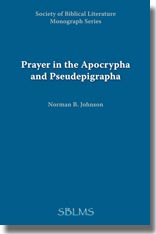
$13.00
“An ancient Jewish rabbi once wrote: ‘It can be discovered from the prayers of a man whether he might be religiously cultured or uncultured’ (Tosephta, Ber. I, 6). He might have said, more specifically, there is no better index of a man’s understanding of God than his prayers. Learn what a man prays for, and you see at once the scope he assigns to God’s power. Learn, in the second place, what inducements a man offers God for the fulfilment of prayer, and you perceive much concerning the character the man assigns to God. And finally, learn what manner of response this man expects—for instance, whether immediate or mediated—and you are in a position to infer whether the individual conceives of God as being manlike or utterly different, close at hand or distant, intimate or austere and despotic.
This indirect approach to theology is dependable because through it we catch a man off guard. What he tells us directly about his concept of God is often warped by his desire to force consistency into his own thinking, and is often prejudice by the very questions he is trying to answer. But if, unknown to him, we can invade the privacy of his chamber and hear the spontaneous outpouring of his own prayer, then we can truly overhear his beliefs. Nothing reveals them more honestly than does (1) the catalog of what he prays for, (2) the way he tries to induce God to grant the petition, and (3) the manner of response he expects.…
For the prayers of the two or three centuries which elapsed between the composition of the latest book of the Hebrew Old Testament and the earliest book of the New Testament, our richest sources are the Apocrypha and the Pseudepigrapha.... While, of course, the prayers imbedded in the Apocrypha and Pseudepigrapha are not actually spontaneous, they are probably not far from it. Therefore, we may feel reasonably sure of the reliability of our data when we analyze these prayers through the three captions suggested above: aims, inducements, and expected responses. The findings will help bridge the gap between the prayers of the Hebrew Old Testament on the one hand and, on the other, the early rabbinic prayers and the prayers of the New Testament. But beyond the prayers themselves we shall see emerging in clearer detail the concept of God which, in varying forms, dominated the mind of the Jew during the intertestamental age.”
—from the introduction
